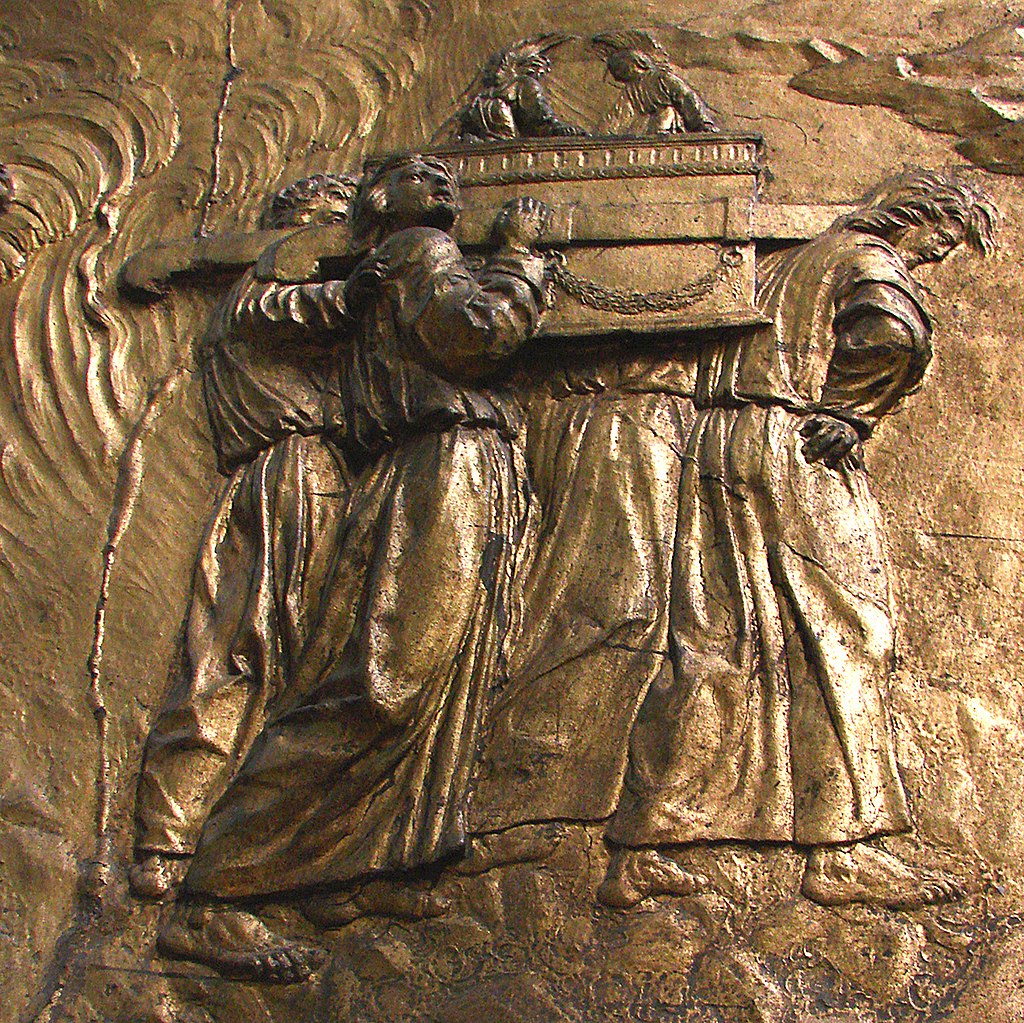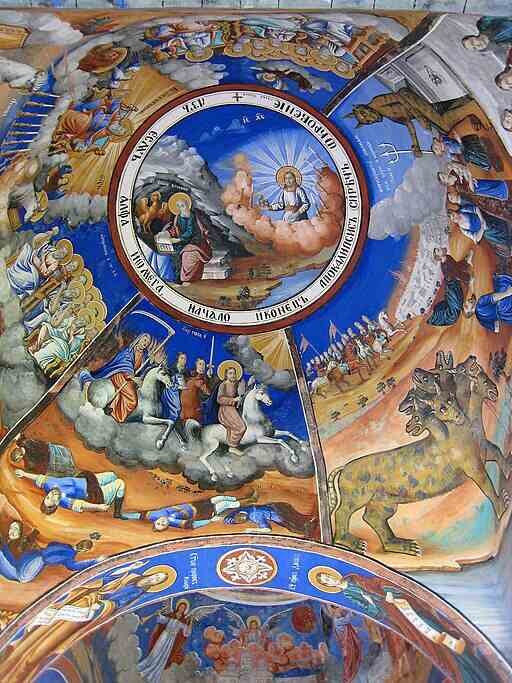The Ark of the Covenant: A Fascinating Biblical Artifact with Mystical Significance
Ark of the Covenant is the trunk or chest which, according to the Bible, contains the Tables of the Law (Ten Commandments) given to Moses on Mount Sinai.
This trunk or chest an oblong wooden chest covered in gold, is revered as the earthly residence of Yahweh (God). It is surmounted by a mercy seat and two cherubim, symbolizing its significance as a divine throne. Housed in the holy of holies within Solomon’s Temple, the Ark holds a central place of worship and spiritual importance.
The Ark of the Covenant holds a profound place in religious history, captivating scholars, theologians, and adventurers alike with its mystique and significance. Mentioned prominently in the Hebrew Bible, specifically in the Book of Exodus, this legendary artifact is believed to have been meticulously crafted under the divine guidance of Moses.
Origins and Description According to Tradition
The Ark of the Covenant would have been used to collect the Tables of the Law entrusted to Moses on Mount Sinai. Symbol of the presence of God among his people, she would have traveled a lot, especially during the journey of the Jewish people in Egypt, before being taken to Jerusalem by King David. It would have been stored in the Holy of Holies of the temple of Jerusalem and no source, including the Bible, mentions it thereafter. Destroyed in a war or an earthquake, moved for protection? No one knows.
What credit should be given to this myth which claims to make Ethiopia the guardian of the most sacred relic of Judaism and even of the three monotheisms?
These claims are justified by the natives by a 13th century manuscript, the Kebra Nagast, which tells that the kingdom of Sheba was Ethiopia and that during her visit to Solomon the queen became pregnant. On his return to Ethiopia was born Menelik, “son of the wise”, who will return to his father from where he will bring back the Ark of the Covenant.
The Ark of the Covenant, as described in the biblical accounts, was a sacred and ornate chest constructed by Moses and the Israelites. It served as a physical vessel to house the stone tablets inscribed with the Ten Commandments, which were given to Moses on Mount Sinai. The Ark was made of acacia wood, a durable and precious material, and covered in gold both inside and out. It featured a lid known as the mercy seat, which was adorned with two cherubim facing each other, their wings outstretched.

Relief of an altar in the cathedral of Auch (France), representing the transport of the Ark of the Covenant. Vassil, Public domain, via Wikimedia Commons
Symbol of Divine Protection (Mystical Power)
The Ark of the Covenant was considered the tangible representation of God’s presence among the Israelites. It was believed to possess mystical powers and serve as a symbol of divine protection. The presence of the Ark was often accompanied by miraculous events and acts as described in the biblical narratives. For example, when the Israelites carried the Ark during the Battle of Jericho, the walls of the city collapsed, leading to their victory. The Ark was also credited with bringing blessings, such as the provision of manna during the wilderness journey and the cessation of plagues.
The Ark of the Covenant holds great significance as a symbol of divine protection and mystical power in various religious traditions. Here are some key points to understand its symbolic importance:
Divine Presence
The Ark was believed to be the dwelling place of God’s presence among the Israelites. It represented a tangible connection between the earthly realm and the divine realm. The mercy seat, with the cherubim on top, signified the throne of God and served as a focal point for worship and communication with the divine.
Spiritual Power
The Ark was associated with miraculous powers and acts. It was believed to possess the ability to bring about divine intervention and protection. The Israelites carried the Ark during their journeys, and it was said to lead them and guide them in times of war and adversity.
The Ark was also associated with miraculous events. For instance, when the Ark was brought into the city of Jericho during the Israelite conquest of Canaan, the city walls miraculously collapsed, allowing the Israelites to capture the city. This event, as described in the Book of Joshua, highlights the belief in the Ark’s supernatural powers and its ability to bring about extraordinary events.
Covenant Reminder
The Ark served as a visual reminder of the covenant between God and the Israelites. It held the stone tablets inscribed with the Ten Commandments, representing the divine laws and principles that the people were expected to uphold. The presence of the Ark emphasized the importance of obedience and adherence to the covenant.
Ritual Significance
The Ark played a central role in religious rituals and ceremonies. It was carried in processions during special occasions, and its presence was believed to sanctify and bless the people and the sacred objects associated with it. The Ark’s presence during festivals and religious gatherings added a sense of reverence and awe.
Protective Shield
The Ark was considered a source of divine protection against enemies and calamities. It was believed that as long as the Ark was with the Israelites, they would be safeguarded from harm. The accounts in the Bible describe instances where the Ark was believed to bring victory in battles and ward off dangers.
Spiritual Energy
The Ark was thought to emit spiritual energy or divine power. It was considered sacred and treated with utmost respect and reverence. Touching or mishandling the Ark was believed to have severe consequences, as it represented a direct interaction with the divine realm.
Overall, the Ark of the Covenant symbolizes the presence, protection, and power of God. It represents the sacred covenant between the divine and humanity, serving as a tangible reminder of faith, obedience, and divine guidance. Its mystical aura and the belief in its extraordinary abilities have made it a subject of fascination and intrigue for generations.
Historical Disappearance
The historical fate of the Ark of the Covenant is a subject of speculation and mystery. According to biblical accounts, the Ark was kept in the Holy of Holies, the innermost chamber of Solomon’s Temple in Jerusalem. However, with the destruction of the Temple by the Babylonians in 586 BCE, the Ark’s whereabouts became unknown. One theory suggests that the Ark was taken by the Babylonians as spoils of war, while another proposes that it was hidden or removed by faithful Israelites to prevent desecration.
In later centuries, various legends and traditions emerged regarding the Ark’s possible location. For instance, Ethiopian Orthodox Christians claim to possess the Ark, housing it in the Church of St. Mary of Zion in Axum. However, these claims are not substantiated and remain the subject of debate among scholars.
The Ark of the Covenant’s historical disappearance has fascinated researchers, explorers, and religious enthusiasts. Many have undertaken quests and expeditions to uncover its fate and rediscover this iconic artifact. Despite the lack of concrete evidence, the enduring mystery surrounding the Ark continues to captivate the imagination and remains a significant element of biblical history and religious folklore.
The Significance in Various Religions
Introduction: The Ark of the Covenant holds profound significance in numerous religious traditions around the world. This sacred artifact is revered for its symbolism and spiritual importance. In this article, we explore the significance of the Ark of the Covenant in different religions, highlighting its role as a symbol of divine presence, covenant, and spiritual devotion.
Judaism
- In Judaism, the Ark of the Covenant is considered the most sacred object, representing the covenant between God and the Israelites.
- It housed the stone tablets inscribed with the Ten Commandments, symbolizing the moral and ethical principles that guide Jewish life.
- The Ark was placed in the Holy of Holies within the tabernacle and later in the inner sanctuary of the temple in Jerusalem.
Christianity
- The Ark of the Covenant holds significance in Christian theology, where it is seen as a foreshadowing of the New Covenant through Jesus Christ.
- It symbolizes the presence of God and His fulfillment of the Old Testament prophecies.
- In some Christian traditions, Mary, the mother of Jesus, is referred to as the “Ark of the New Covenant” due to her role in carrying the Son of God.
Ethiopian Orthodox Church
- In the Ethiopian Orthodox Church, the Ark of the Covenant is believed to be housed in the Church of St. Mary of Zion in Axum, Ethiopia.
- It is considered the most important religious relic, and access to it is strictly limited to a select few clergy members.
- The Ark is regarded as a powerful symbol of the covenant between God and the Ethiopian people.
Other Religions
- The Ark of the Covenant is mentioned in Islamic and Baha’i scriptures, where it holds significance as a symbol of divine guidance and revelation.
- In some African and Afro-Caribbean religions, elements of the Ark’s symbolism and story are incorporated into their spiritual practices and rituals.
The Ark of the Covenant carries immense significance in various religious traditions. As a symbol of divine presence, covenant, and spiritual devotion, it represents the profound connection between humanity and the divine in different cultural contexts. The reverence and importance attributed to the Ark serve as a testament to its enduring legacy and its ability to inspire faith and devotion among believers across different religions.
The Ark of the Covenant in the Chapel of Adoration (Saint-Roch Church, Paris Ist district – France). Mbzt, CC BY-SA 3.0, via Wikimedia Commons
Where is the Ark of the Covenant located today?
The current location of the Ark of the Covenant remains uncertain and speculative.
Currently, it would be kept in the “Chapel of the Ark of the Covenant”, located in an enclosure separate from the Sainte-Marie-de-Sion church, under the protection of a guardian appointed for life by his predecessor, who is the only one allowed to see her and who never leaves the enclosure.

The Chapel of the Tablet at the Church of Our Lady Mary of Zion in Axum allegedly houses the original Ark of the Covenant. Adam Cohn, CC BY-SA 3.0, via Wikimedia Commons
According to biblical accounts, the Ark was last mentioned in relation to the construction of Solomon’s Temple in Jerusalem. However, after the Babylonian conquest of Jerusalem in 586 BCE, the Ark’s whereabouts are unknown.
There are several theories and legends regarding the fate of the Ark. Some suggest that it was hidden or taken away for safekeeping before the destruction of the Temple, possibly in a secret chamber or a remote location. Others believe that it was destroyed or lost during the Babylonian invasion.
Over the centuries, various claims have been made about the discovery of the Ark, but none have been substantiated. There are legends and theories associating the Ark with different locations, including Ethiopia, Egypt, and even hidden chambers beneath the Temple Mount in Jerusalem. However, these claims lack concrete evidence.
It’s important to note that the search for the Ark of the Covenant continues to captivate the imagination of many, but its true whereabouts remain unknown. The Ark’s historical disappearance adds to its mystery and continues to fuel speculation and exploration in archaeological and religious circles.
Sources: PinterPandai, HistoryHit, National Geographic, Ancient Origins
Photo credit: James Tissot, Public domain, via Wikimedia Commons
Photo description: Moses and Joshua bowing before the Ark (c. 1900) by James Tissot.




